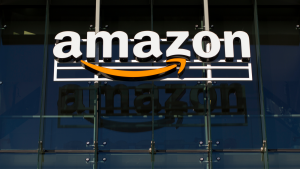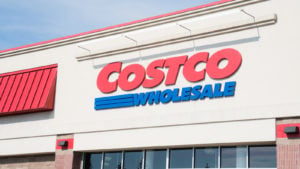
The rise of the best retail stocks to buy is deeply embedded in the ongoing inflation story. Supply chain disruptions and a rise in commodities prices, namely crude oil, led to an unprecedented rise in inflation in 2022. The U.S. Federal Reserve stepped in by raising interest rates to levels not seen in more than two decades. The Federal Funds rate, the central bank’s key rate target, remains elevated at a range between 5.25 and 5.50%. While inflation in the United States has definitely slipped downward, consumers are largely still submerged in an environment of relatively high prices.
A surprisingly resilient labor market coupled with inflated prices has been a good deal for many retailers, many of which have used price increases to drive top-line growth figures. With inflationary pressures subsiding, periods of strong year-over-year (YOY) revenue growth may start to dissipate. Nonetheless, well-established retail platforms that have adopted effective growth channels, such as e-commerce, are likely to remain good performers.
Below are three of the best retail stocks to buy in June 2024.
Amazon (AMZN)

Amazon (NASDAQ:AMZN) is a U.S. tech titan operating sizable e-commerce, logistics and cloud computing businesses. While Amazon’s cloud computing services AWS has been on the mind of investors and market-watchers alike, particularly as artificial intelligence and digital transformation efforts have fomented robust demand for cloud services, the tech platform’s e-commerce business is still doing well.
In the first quarter of 2024, Amazon reported a 13% YOY increase in net sales, a figure that ultimately hit $143.3 billion. Amazon’s “online stores” sales increased 7% from last year to $54.6 billion, while “third-party sellers services,” which includes fulfillment and shipping services third-party sellers, increased 16% to $34.6 billion. Amazon Prime subscription growth contracted but still hit double digit YOY growth of 11%.
Surging financial figures related to retail sales and growth in new segments like advertising makes Amazon one of the best retail stocks to buy at this point. AMZN has climbed 23.2% on a year-to-date (YTD) basis.
Walmart (WMT)

Walmart (NYSE:WMT) makes the second entry on the list and is a key competitor to Amazon in the online retail space. The retail behemoth has been working at developing e-commerce sales channels since the company launched online shopping via Walmart.com way back in 2000. Unlike many smaller retailers who had been late to the game, Walmart has proved to be a formidable foe to Amazon’s dominance in e-commerce.
The box-store retailer continues to make significant gains in e-commerce growth. For Walmart’s first quarter earnings report for its fiscal year 2025, revenue increased 6% YOY to $152.3 billion, and net income more than tripled to $5.10 billion. The retailer’s e-commerce sales grew 21% YOY, making a significant contribution to Walmart’s overall sales growth. E-commerce penetration will likely increase over time as store-fulfilled pickup & delivery as well as the retailer’s marketplace services gain scale. Walmart is also successfully targeting high-income shoppers in an effort to shift its customer mix.
WMT shares have enjoyed a 27.9% YTD price surge yet trades at 27.1x forward earnings, a relatively cheaper trading multiple when compared to its e-commerce rival Amazon.
Costco (COST)

Costco (NASDAQ:COST) is another low-cost retail platform that has made successful inroads into the e-commerce space. The retailer has been building and operating warehouses since the early 1980s. Already assuming an important role in goods logistics, Costco was well-poised to enter the e-commerce space as early as it did. Costo launched its website Costo.com in 1998, and its growing network of warehouses have served as inventory and fulfillment centers for the company’s growing online platform.
Similar to Walmart, Costco’s e-commerce business undergirds much of its recent top-line growth figures. Costco’s third quarter results for fiscal year 2024, ended May 12th, built on growth in prior quarters. Net sales for the quarter grew 9.1% to $57.4 billion. E-commerce sales growth remained solidly in the double-digit territory, hitting 20.7% YOY.
Costco is building more warehouses and expects to have a total of 890 warehouses by the end of its 2024 fiscal year, which would represent a 3.3% increase from the prior fiscal year.
Moreover, COST shares have enjoyed growth similar to its online retail rivals — Walmart and Amazon — rising 29.1% on a YTD basis.
On the date of publication, Tyrik Torres did not have (either directly or indirectly) any positions in the securities mentioned in this article. The opinions expressed in this article are those of the writer, subject to the InvestorPlace.com Publishing Guidelines.






